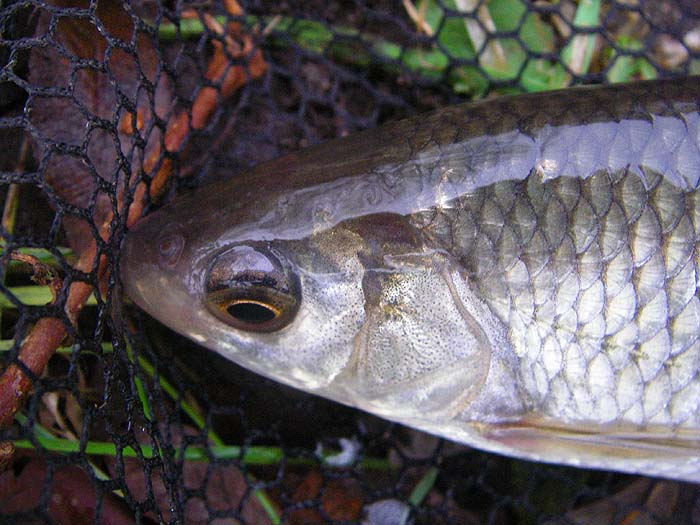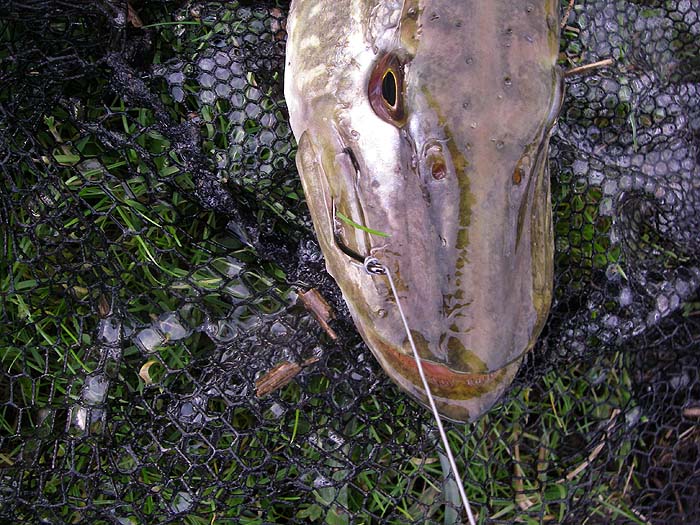

Catch Fish with
Mike Ladle
Information Page
SEA FISHING
For anyone unfamiliar with the site always check the FRESHWATER, SALTWATER and TACK-TICS pages. The Saltwater page now extends back as a record of over several years of (mostly) sea fishing and may be a useful guide as to when to fish. The Freshwater stuff is also up to date now. I keep adding to both. These pages are effectively my diary and the latest will usually be about fishing in the previous day or two. As you see I also add the odd piece from my friends and correspondents if I've not been doing much. The Tactics pages which are chiefly 'how I do it' plus a bit of science are also updated regularly and (I think) worth a read (the earlier ones are mostly tackle and 'how to do it' stuff).
Pike programme.
I KNOW that this isn't sea angling but this might just be of interest to some readers of the BLOG. I recently made the latest of a number of LIVING WORLD broadcasts for BBC Radio 4 concerning pike research by the Freshwater Biological Association and its relevance to pike fishing. I worked for the FBA for 36 years and the studies on fish and fishing which we carried out have been fundamental to our understanding of fish ecology and behaviour. For those of you who are insomniacs my piece will be broadcast on - Sunday 31 January at 06.35am
There's more pikey stuff in Freshwater Blog page 197. I've also just written a piece for the FBA newsletter 'Freshwater Life' about the same sort of topic so I'll include an edited version of it here.
Recreational fishing and Science at the FBA River Laboratory.
When I was five years old my dad took me for a walk near a golf club on the outskirts of Leeds. As we passed a dirty little pond I picked up a stick from the mud. On the end of the stick was a piece of thread with a worm attached and clinging to the worm was a stickleback, I thought that I’d never seen anything so wonderful – I was hooked! Twenty years later when I was interviewed for a job with the FBA at Wareham, the panel asked me whether I had any hobbies and my answer - “I’m a fanatical fisherman!” - obviously rang the correct bells - I worked there from 1965 until my retirement.
Since its River Laboratory was opened in the early 1960s the Freshwater Biological Association has owned several kilometres of fishing on the south bank of the River Frome. Much of the research on the river over the past 45 years would have been extremely difficult without this ownership because installation of equipment, sampling and even access to the banks depended on having control of the fishing.
The main technical installation at East Stoke is the migratory fish counter (currently operated by staff members of the Game and Wildlife Conservation Trust working at the Laboratory) on the Environment Agency's flow gauging weir. The long-term records of salmon migration, hourly, daily and yearly, obtained from this device are probably the best data set of its kind in the UK and have in recent years been supplemented by counts of downstream migrating smolts – ‘so it is now possible to count them in and count them out’. Since the counting started, it has been possible to make comparisons with catches reported by anglers fishing on the river. The average exploitation level by anglers used to be (they all go back alive these days) in the order of 11% of the run. Not surprisingly, although catches are related to counts, the influence of variables such as fishing effort and conditions (water levels, turbidity, temperature, etc.) mean that catch is rarely a good indicator of the number of fish running upstream.
In recent years the, almost universal, changes in population structure and the dramatic decline in runs of Atlantic salmon, have been reflected in the Frome data. In the event that current restoration activities, such as cleaning of spawning gravels and catch and release of adult fish, are successful, the counts will provide a measure of this and hopefully give us an idea of the value of different conservation techniques. The importance of these studies to the future health of salmon stocks can hardly be overstated.
Of course salmon and seatrout are by no means the only fish in the Frome. The fish counter also records the upstream and downstream movements of other species. Some are difficult to identify from overhead video pictures but others, such as the little studied thinlipped mullet which enters south coast rivers to feed, have been regularly observed in large shoals. This species, which usually feeds on microscopic algae and other small particles, was seen to swim upstream during Spring and Autumn blooms of diatom algae. The movements of the fish could be predicted from seasonal falls in the silica concentration of the water resulting from uptake by fast growing algae. These fish can only be caught in numbers by the use of the baited spoon, a specialised angling technique developed on various Dorset estuaries including those entering Poole harbour.
Large populations of dace, roach, grayling, pike and eels are present in the FBA waters as well as many smaller species such as minnow, bullhead, stone loach, sticklebacks and gudgeon. Dr Richard Mann and his team spent decades studying the basic ecology of many of these species. ‘Tags’ such as fin clips, numbered jaw tags, ‘tattoos’, visible implants (little numbered pieces of film inserted under the skin) and elastomer (colour coded plastic injected into fin membranes), were all used to identify individual fish – but these had to be recaptured (often by angling) for examination.
More recently, remote detection of fish by electronic tagging methods was developed and introduced at East Stoke. This enabled scientists to track and identify individual fish and to establish home ranges, patterns of movement, feeding, breeding and migration activities. Tags have been miniaturised for attachment to fish as small as dace, others have had switches introduced to enable recording of the feeding lunges of pike. By using Passive Integrated Transponders (PIT tags) there is now the possibility of recognising individual fish of all sizes (including juvenile pike and salmon and trout smolts) even without removing them from the river. PIT tagging helps to establish their breeding sites and how they disperse from them. It is only by fully understanding the habitat requirements of each species at different life stages that realistic management decisions can be taken.
As hinted already Frome angling has its part to play in the scientific study of fish other than salmonids. Knowledge of fish behaviour patterns gained by time spent fishing and observing fish is of great value when it comes to deploying scientific effort. The anglers have also helped by catching fish to be tagged and recapturing them when tags needed to be replaced. Over the years angling methods have been modified to be more ‘fish friendly’. For example by the introduction of barbless, jaw-hooking, circle hooks to capture pike, instead of traditional treble hooks. The handling and surgical manipulation of the fish themselves, often involving antibiotics, disinfectants, anaesthetics and dissolving sutures is also now well tried and very effective as shown by the often prolonged survival and normal growth patterns of the tagged fish. Conversely, the studies of dace have revealed the large scale daily migration, the almost exclusive use of mill streams as spawning areas and the apparent importance of flooded meadows as refuges during periods of high water. This will clearly be of great interest to anglers and to conservation bodies including the Environment Agency.
All in all the benefits of scientific research carried out on a well controlled fishery have proved to be substantial. Fishing, after all, is the norm rather than the exception on rivers in the UK. Currently, the investigation of salmon, eels, pike and other fish species continues on the FBA waters. Anglers still catch fish for tagging, exchange information with scientists and help to gather data for research purposes. At times, because it is selective and non-destructive, rod and line fishing is the only means of recapture permitted by the Environment Agency.
If you have any comments or questions about fish, methods, tactics or 'what have you!' get in touch with me by sending an E-MAIL to - docladle@hotmail.com
Beautiful fish.

Finding tagged pike -

Thinlip.

Circle hook.
